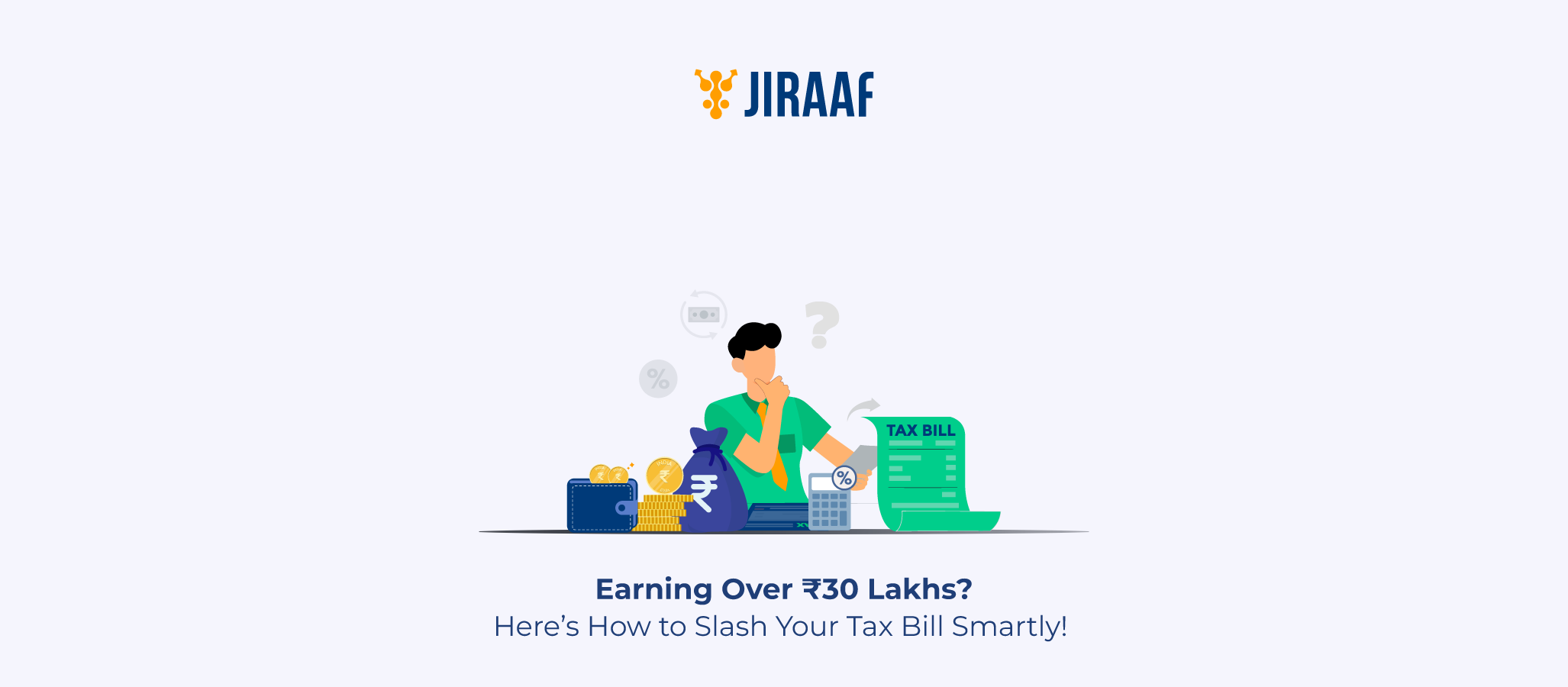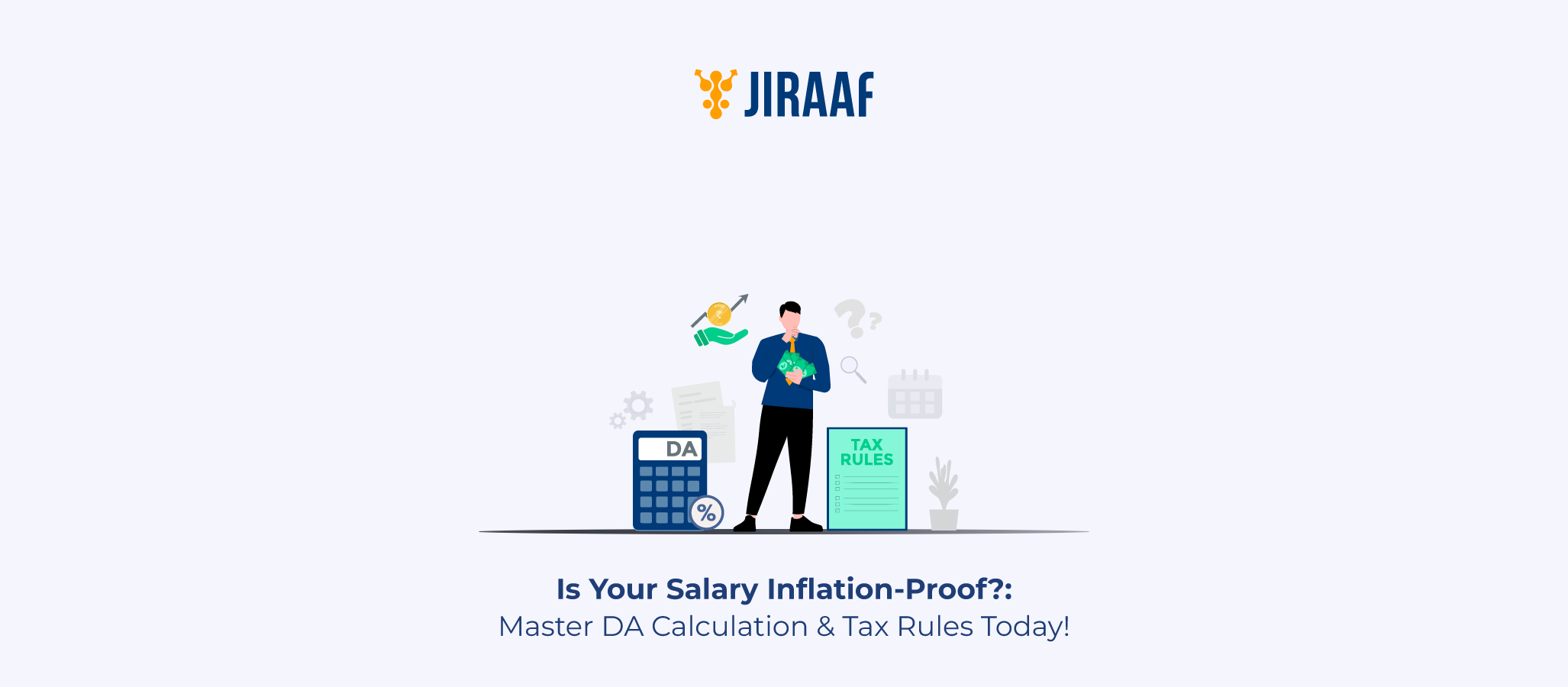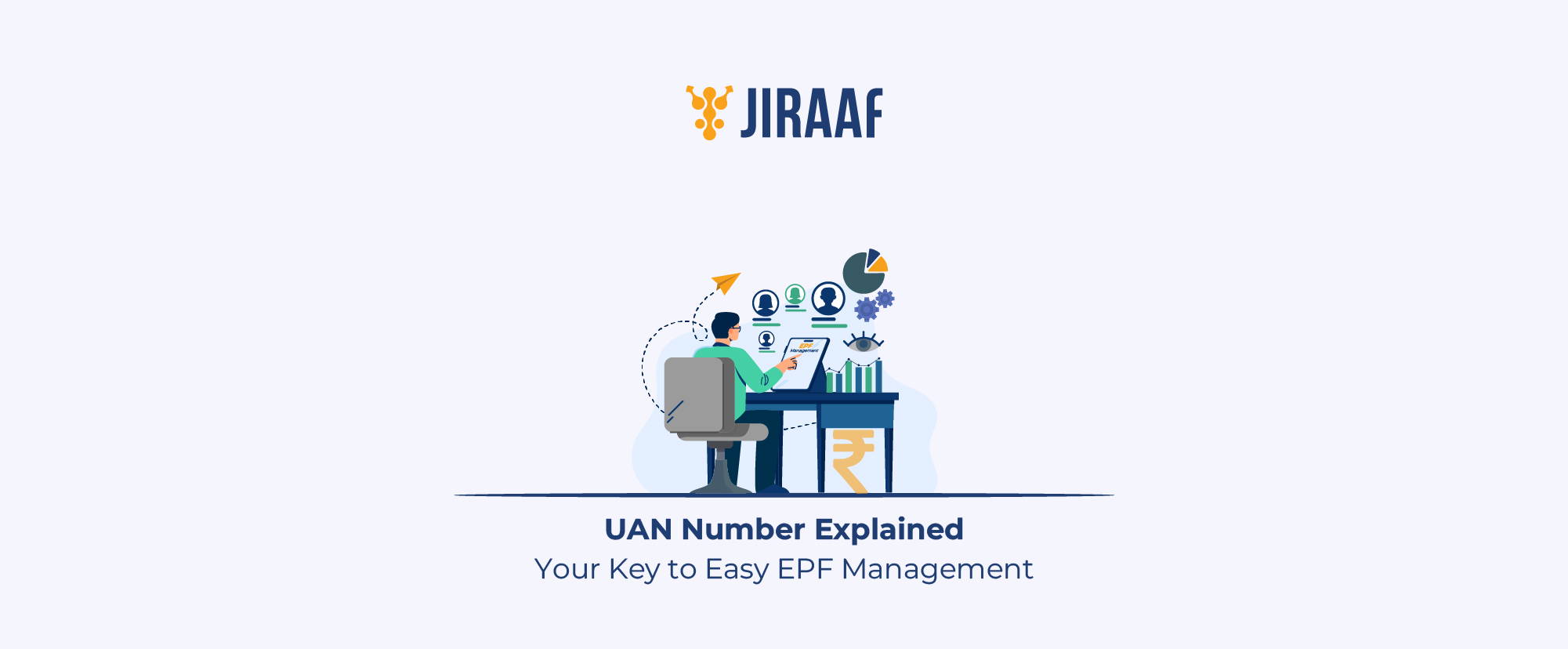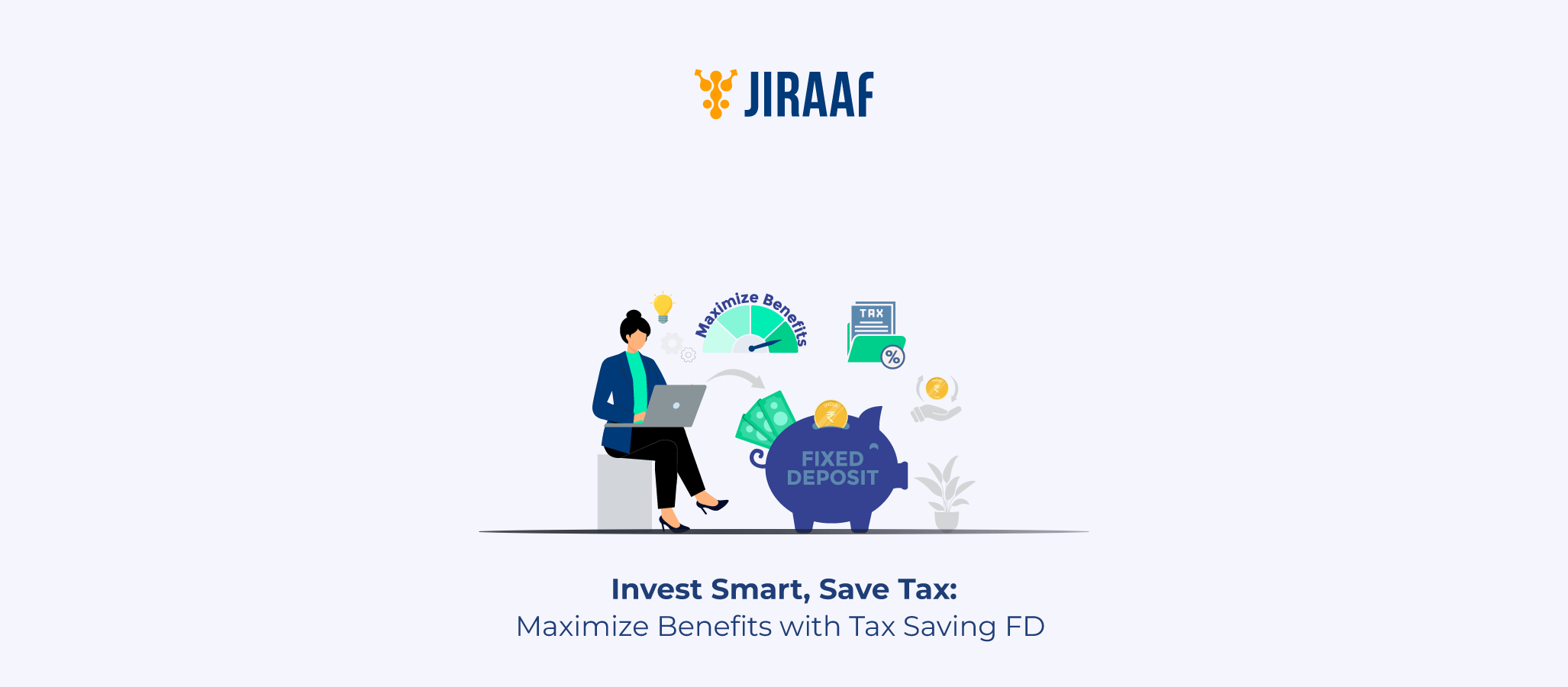If you earn over ₹30 lakhs a year, congratulations—you’re among India’s top income earners. But that also means you’re in the highest tax bracket, with significant liability under the old or new tax regimes. The good news? With smart planning, you can legally reduce your tax outgo and keep more of what you earn.
In this blog, you’ll discover tax-saving strategies tailored for high-income salaried individuals, including deductions, exemptions, investment planning, and real-world examples that make implementation easy.
Understand Your Tax Liability
Before exploring those tax-saving tips we talked about, it’s crucial for you to understand your current tax liability.
Tax Rates for Income Above ₹30 Lakhs
| Income Slab (Old Regime) | Tax Rate |
| ₹2.5L–₹5L | 5% |
| ₹5L–₹10L | 20% |
| ₹10L and above | 30% |
| Surcharge (₹50L–₹1Cr) | 10% |
| Surcharge (₹1Cr–₹2Cr) | 15% |
| Surcharge (₹2Cr–₹5Cr) | 25% |
| Surcharge (₹5Cr+) | 37% |
Tax Rates for Income Above ₹30 Lakhs (New Regime)
(Updated for FY 2025-26, effective 1 April 2025)
| Income Slab | Tax Rate |
| Up to ₹4,00,000 | 0% |
| ₹4,00,001–₹8,00,000 | 5% |
| ₹8,00,001–₹12,00,000 | 10% |
| ₹12,00,001–₹16,00,000 | 15% |
| ₹16,00,001–₹20,00,000 | 20% |
| ₹20,00,001–₹24,00,000 | 25% |
| Above ₹24,00,000 | 30% |
Surcharge (New Regime)
| Income Range | Surcharge Rate |
| ₹50L–₹1Cr | 10% |
| ₹1Cr–₹2Cr | 15% |
| ₹2Cr–₹5Cr | 25% |
| ₹5Cr+ | 25% (highlighted change: previously 37%, now capped at 25% for new regime) |
Should You Choose the Old or New Tax Regime?
| Factor | Old Regime | New Regime (FY 2025-26 onwards) |
| Deductions allowed | Yes | No (except standard deduction of ₹75,000 for salaried) |
| Tax Slabs | Higher | Lower |
| Good for | Those using 80C, 80D, HRA, etc. | Those with fewer deductions |
Maximize Deductions Under Section 80C
Section 80C is the most common way to reduce taxable income up to 1.5 lakhs.
Popular 80C Options
- Public Provident Fund (PPF): Lock-in of 15 years, tax-free interest
- Employees’ Provident Fund (EPF): Mandatory for salaried individuals
- Equity Linked Savings Scheme (ELSS): 3-year lock-in, market-linked returns
- 5-Year Fixed Deposit: Safe, but interest is taxable
- Life Insurance Premiums: Must be less than 10% of sum assured
Leverage an Additional ₹50,000 Under Section 80CCD(1B) via NPS
The National Pension System (NPS) gives you an additional deduction of ₹50,000 over and above 80C.
- Choose either Active or Auto investment mode
- Invest via Tier I account (Tier II is not eligible for tax benefits)
Smart Tip: Use NPS for long-term retirement planning and tax savings.
Claim Section 80D for Medical Insurance Premiums
| Who’s Covered | Deduction Limit |
| Self + Family (under 60) | ₹25,000 |
| Parents (above 60) | ₹50,000 |
| Total Possible | ₹75,000 |
Also includes preventive health checkups (₹5,000 within limits).
Use HRA & Home Loan to Your Advantage
HRA (House Rent Allowance) Exemption
Claimed under Section 10(13A), available only if:
- You live in rented accommodation
- You pay rent
- You receive HRA as part of your salary
Formula-based calculation applies (least of three values: actual HRA, rent paid minus 10% salary, or 50%/40% of salary based on city).
Home Loan Benefits
| Component | Section | Limit |
| Principal Repayment | 80C | ₹1.5L |
| Interest Repayment | 24(b) | ₹2L |
| Additional Interest for First-time Buyer | 80EE/80EEA | ₹50K / ₹1.5L |
Save Through Salary Restructuring
Ask HR to restructure your salary to include more tax-free components.
| Component | Tax Status | Limit/Notes |
| Meal Coupons | Tax-free | Up to ₹50/day |
| Fuel Reimbursement | Tax-free | For official use |
| Mobile/Internet Bills | Tax-free | Reimbursed on bills |
| Leave Travel Allowance (LTA) | Tax-free | For domestic travel, twice in 4 years |
Use Section 80E, 80G, 80GGA, and Others
Education Loan (80E)
- Deduct full interest paid for 8 years
- No limit, but principal not covered
Donations (80G/80GGA)
- Donations to eligible institutions: 50%/100% deduction
- 80GGA for scientific research or rural development
Disabled Dependents (80DD) or Self (80U)
- Fixed deduction up to ₹1.25L depending on severity
Use Capital Gains Exemptions If You Have Investments
You may earn capital gains from stocks, property, etc. Use these wisely:
- Section 54: Reinvest in property to save tax
- Section 54EC: Buy REC/NHAI bonds within 6 months
- Section 10(38): No longer applicable; LTCG on equity above ₹1 lakh is taxed at 10% without indexation under Section 112A
Invest in Tax-free Instruments
| Instrument | Returns | Taxability |
| PPF | ~7.1% | Tax-free |
| Sukanya Samriddhi Yojana | ~8% | Tax-free |
| EPF | 8.15% | Tax-free up to ₹2.5L/year |
| Tax-Free Bonds (REC, NHAI) | ~5–6% | Tax-Free Interest |
Advanced Tax Planning for ₹30L+ Income
If your salary exceeds ₹30L, you may face higher surcharge rates. Here’s how to manage that:
1. Split Income Strategically
- Income from capital gains and dividends have different surcharge caps
- LTCG surcharge capped at 15%
2. Defer or Spread Bonus/Stock Options
- Avoid lump-sum income that pushes you into higher surcharge bracket
3. Income Shifting (Where Legal)
- Invest in spouse’s name (if in lower tax slab)
- Create a Hindu Undivided Family (HUF) for tax planning
New Tax Regime: Should You Opt for It?
Pros
- Lower tax rates
- Simple compliance
- No investment compulsion
Cons
- No deductions like 80C, 80D, HRA (except standard deduction of ₹75,000 for salaried individuals)
- Better only if you’re not claiming exemptions
Rule of thumb: If your deductions > ₹4L, the old regime is usually better.
Tax Planning for ₹35 Lakh Salary with Example
Let’s understand this better with the help of an example. Assume this is your salary structure:
| Component | Amount (₹) |
| Gross Salary | 35,00,000 |
| 80C (ELSS + PF + LIC) | 1,50,000 |
| 80CCD(1B) – NPS | 50,000 |
| 80D (Self + Parents) | 75,000 |
| Home Loan (24b) | 2,00,000 |
| HRA Exemption | 3,00,000 |
| LTA + Allowances | 1,00,000 |
| Total Deductions | 8.75 lakhs |
Taxable Income: ₹26.25L
Tax Saved: Over ₹2.6L
Effective Tax Rate: Reduced significantly by optimizing salary & investments.
Common Mistakes to Avoid
| Mistake | Why It’s Costly | What To Do Instead |
| Not reviewing old vs new tax regime | You may overpay tax | Use tax calculators annually |
| Last-minute investments | Leads to poor choices | Plan at start of FY |
| Ignoring employer benefits | Missed exemptions | Maximize reimbursements |
| Not declaring income from all sources | Leads to notices | File a complete return |
| Overlooking surcharge impact | Especially for ₹50L+ incomes | Spread or defer income smartly |
Final Thoughts—Strategic Tax Planning is Key at Higher Salaries
The more you earn, the more critical tax planning becomes. But saving tax doesn’t mean cutting corners—it means playing smarter. A salary above ₹30 lakhs can be efficiently optimized through structured planning, salary structuring, investment strategies, and a mix of exemptions and deductions.
Stay proactive, use digital tools to simulate tax outcomes, and don’t hesitate to consult a financial planner. Remember: tax saved is income earned.
FAQs
What is the best tax-saving option for ₹30L+ salary?
A mix of ELSS, NPS, insurance, home loan benefits, and salary structuring offers the best tax optimization.
Can I switch between old and new regime every year?
Yes, salaried individuals can switch annually. But if you have business income, switching is allowed only once.
Is NPS better than PPF for tax saving?
NPS offers an extra ₹50K deduction and employer contribution benefits under 80CCD(2), making it more lucrative for high-income earners.
How do I know which tax regime is better for me?
Use the Income Tax Department’s tax comparison calculator or consult a tax planner based on your deductions.
Discover fixed income investments with Jiraaf, a SEBI registered online bonds platform that educates and brings access to a wide array of bonds. Sign up today to explore diversified fixed income investment opportunities to support your goal-based wealth creation journey. Start investing!









